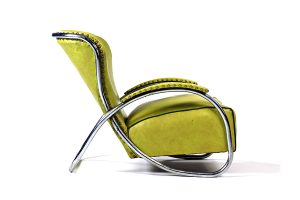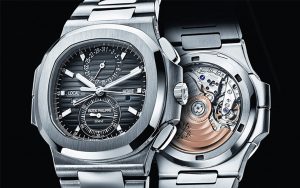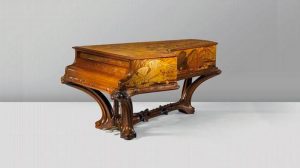The Delorean Motor Company and its only model, the DMC12, simply known as “The Delorean”
Was this a success story or a failure? A brief overview of the iconic product and doomed car company.
In 1981, in a brand new, state of the art factory in the small town of Dunmurry, Northern Ireland, and supported by a 100 million pound investment by the British government, the Delorean Motor Company started production of their iconic stainless steel clad sports car, the DMC12, or more commonly, ‘The Delorean.’ Unfortunately this was to be their only model.
The car’s body was designed by the Italian design house, Ital Design by Giorgetto Giugiaro. They are based in Moncalieri, Italy, founded in 1968. The engineering was designed by Delorean’s chief engineer, WilliamT Collins.
The car’s unique construction consisted of a glass fibre shell onto which uncolored brushed 304 stainless steel panels were fixed. Gull-wing doors topped off the project and are mainly what the car is best remembered for, other than its appliances in the ‘Back to the Future’ series of movies of which it was, in my opinion, the star.
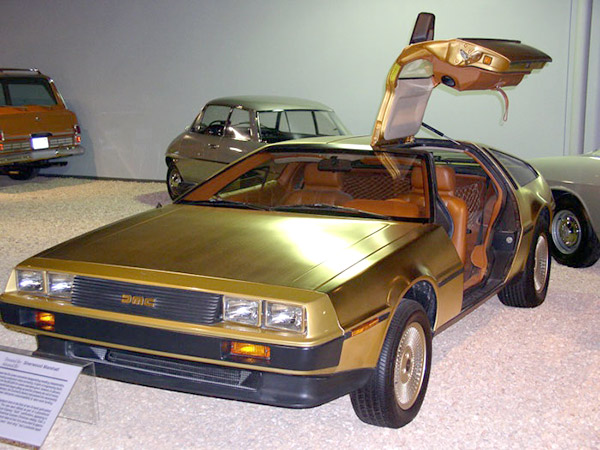
One of the Four Gold Plated Delorean Cars.
Three of the cars were gold plated in 24K gold. These were made for marketing proposes and a new gold plated car was produced from spare panels. The car was only ever produced in left hand drive apart from 16 units as they were intended for the Japanese market.
The car was never considered to be fast, or to handle well or even to be very well built but the demand was huge. The car was expensive, in today’s money around 66-68000 USD. It was in demand and customers were known to pay 10,000 USD over the asking price to secure a car.
Engines were fairly underpowered being Peugeot/Renault/Volvo, 2.85 litre, V6 producing a paltry 120 hp once the catalytic converter was fitted. They had to fit the catalytic converter to enable sales in the USA, the car’s target market. The gearbox was also manufactured by PRV, both engine and gearbox were built in France. The gearbox was available in 5 speed manual or as a 3 speed automatic.
The production run was extremely short. The factory produced cars for just over a year and in that year a mere 9200 cars were finished. Those not sold in 1982, were re VINed to suggest they were manufactured in 1983.
Sales were hit by the recession, which at the time was the biggest to ever hit the American car industry. In 1983 after John Delorean’s arrest on drugs charges (he was found to be innocent) the factory closed its doors. The 100 million pound investment from the British Government was gone as was the money received from private investors, many of whom were American celebrities.
I personally love the car. It evokes a period of time when design was pretty much overlooked by car companies. Think of some of the run-of-the-mill cars that were being produced in 1982, mostly horrible. The Delorean stands out from the crowd and they really have to be congratulated on producing a design classic. This is a car that still looks fantastic today by modern design standards and is a comfortable, if a little underpowered performance/sports car. I think if the recession had not hit the company so hard they would have gone from strength to strength and I think we are all a little poorer for their demise. We need individuals like John Delorean more than ever.
Double Stone Steel, would love the opportunity to be able to PVD some of these cars panels, I think a pvd, ion plated, colored stainless steel Delorean in Black would look fantastic. If anyone is brave enough, they can contact me via the blog.
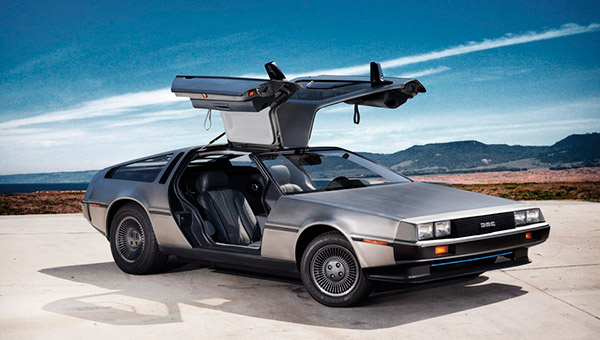
The Delorean

